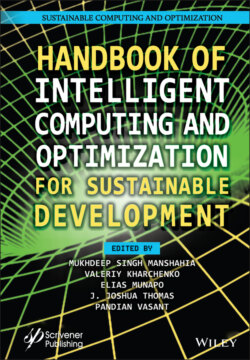Читать книгу Handbook of Intelligent Computing and Optimization for Sustainable Development - Группа авторов - Страница 96
4.1 Introduction
ОглавлениеCryptography is the computing science of hiding sensitive information by scientifically transforming it from understandable to un-understandable format in order to ensure secrecy, credibility, and precision during data transfers over public communication networks. Residue matrices and elliptic curve arithmetic based on modular number crunching are often utilized by numerical calculations in encryption and authentication. In recent years, well-known ciphers used non-linear cryptographic transformation methods focused on residue matrices and elliptic curve arithmetic [12].
A plane made of complex numbers is becoming more valuable in computing science areas that deal with the applications in cryptography in order to make them more stable. Quantum proposition introduced in the terms of vector spaces is a computational framework that applied to complex numbers, and may be utilized in quantum variants of asymmetric key distribution protocols in this direction [14, 15, 17]. As a result, the mathematical properties of residue matrices and elliptic curve arithmetic on the plane made of complex numbers are observed to use them in the applications of cryptographic science.
The aim of this chapter is to extend non-linear cryptographic transformation techniques by using mathematical properties of residue matrices and elliptic curve arithmetic over the complex plane using modular arithmetic.
